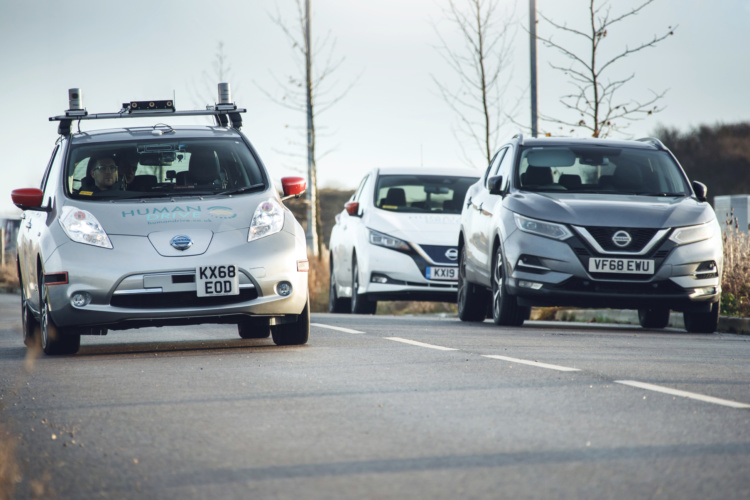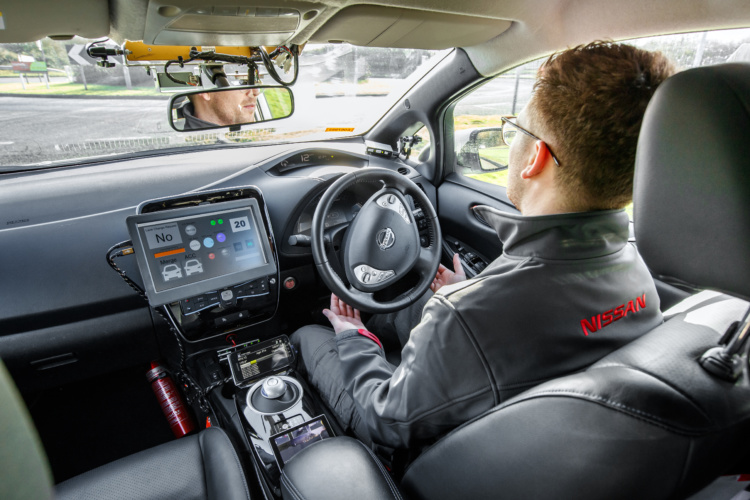
The milestone journey, which took place on 28th November last year (2019), marked the culmination of the HumanDrive project, a closely guarded, three-year long Nissan led initiative primarily aimed at developing technology that can help autonomous cars drive in a more “human-like” manner, thereby helping passengers to feel more comfortable with the technology.
The £13.5m project, which included a consortium of nine industry partners and was funded by the UK government’s Centre for Connected and Autonomous Vehicles (CCAV) consisted of two elements: the 230-mile “grand drive” from Cranfield to Sunderland and a test track-based activity that looked at how AI could be used to further improve the performance of autonomous vehicles.
The project making driverless cars more human
UK team trial cybersecurity tech for driverless cars
Nissan’s Bob Bateman, who led the project, explained that the grand drive enabled the group to put its technology to test in one of the world’s most complex and unique road environments. “The HumanDrive project allowed us to develop an autonomous vehicle that can tackle challenges encountered on UK roads that are unique to this part of the world, such as complex roundabouts and high-speed country lanes with no road markings, white lines or kerbs,” he said.
Enabling autonomous vehicles to deal with these conditions in a driving style that is recognisably human-like will be key to driving consumer confidence in the technology, he added. “This project aimed to use advanced technologies for autonomous vehicles to try and emulate a human-like experience to ensure that the customer feels comfortable and safe. We’re trying to move from a taxi service to a luxury chauffeur surface.”
The trials used a heavily modified Nissan Leaf, with racks of computers in the boot and a range of radar, LIDAR and camera systems, as well as a highly accurate differential GPS system, that is used to build up a perception of the world around it.
Commenting on the decision to use the Leaf for the project, Nissan research engineer Chris Holmes said: “It’s our key icon for intelligent mobility research. Also electric vehicles lend themselves quite well towards utilising computers in the boot and also have nice clean electric power source for running the system.”
An additional element of the project, carried out on Nissan’s private test track, used technology developed by consortium partner Hitachi Europe Ltd to explore how real-time machine-learning AI could be used to further enhance the performance of driverless cars. Nick Blake, chief innovation strategist at Hitachi explained that this system uses a dataset of previously encountered traffic scenarios and solutions, so-called “learned experience”, to enable the vehicle to recognise and cope with future scenarios that it may encounter. He added that through the project the group developed an easily reconfigurable AI technology that enables autonomous vehicles to have different driving styles for different people.

Other consortium partners included that University of Leeds, which helped to simulate and evaluate controllers that mimic human behaviour, Cranfield University, Horiba MIRA, which provided test facilities, and Atkins, which developed a cybersecurity framework.
Bateman said that whilst there are no immediate plans to commercialise the technologies developed through the project, its findings will help feed into the overarching Intelligent Mobility vision, that has seen a host of driver assistance technologies introduced onto its production vehicles. He added that attention will now turn to a soon to be launched follow on project that will focus on the challenges of autonomous city driving.




Project to investigate hybrid approach to titanium manufacturing
What is this a hybrid of? Superplastic forming tends to be performed slowly as otherwise the behaviour is the hot creep that typifies hot...